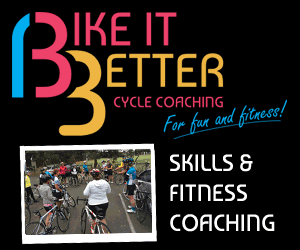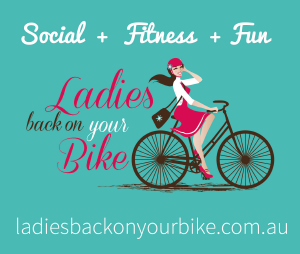Being able to ride in a straight line isn’t as easy as it sounds. Emma Clark discovers techniques to help master this vital riding skill.

Keeping perfect balance on the bike comes naturally for some, but not everyone is so gifted. And any imbalance will be amplified when you need to take a hand from the handlebar to signal a turn, grab a water bottle, switch on your light or simply wave to a friend.
Maybe you’re a swervy head-checker, the bike drifting to one side as you turn to see what’s coming behind you; a very common trait. Perhaps you’re even a uni-turner, avoiding right-hand turns altogether for fear of a humiliating wobble as you make a jerky, split-second arm lift that passes for a right-turn signal.
If you feel less than confident with your ability to hold a straight line in these situations, don’t despair; help is at hand.
Find your balance
To help practise your balance skills, find a safe area, such as an empty parking lot or a schoolyard. Quiet, flat paths such as rail trails and back-street bike paths are also good places to practise indicating and head checking.
One of the keys to staying stable starts with your posture and positioning on the bike. Physiotherapist Rosy Strong, who runs bike-training business Bikes@Work, told Ride On: “A big part of balancing is to think about the three points of contact you have with the bike: your hands on the handlebars, your feet on the pedals, and your bottom on the saddle.
“Make sure that you are sitting straight on the seat, not too far forward or back, and that the balls of your feet are firmly on the pedals. Many riders grip the handlebars for dear life, carrying too much weight over their hands, which makes it difficult when you have to lift one hand off the bars. Engage your core muscles to keep your torso still, but make sure your arms are relaxed.”
Yanking on the handlebars will lead to over-correction. Try to relax your arms, neck and shoulders as much as possible and keep an even spread of your weight on the three points of contact. Make sure the gears are low enough so that you can push the pedals with ease. Go at a steady pace, trust the bike and work with it. At the risk of sounding like a Zen master, try to become ‘one’ with the bike.
One-handed riding
“Keeping your arms relaxed, loosen your grip on the handlebars and rest just your fingertips on the top of the bars,” says Rosy. “When you feel confident doing this, you can take one hand off and rest it on your knee or in your lap. Make sure you keep your torso still and your stomach muscles engaged.
“From here, try putting your hand behind your back or on the rear of your saddle. Once you feel comfortable, try holding your arm out to the side, as if you were indicating. Focus on keeping a straight line, and don’t overcorrect if you start to wobble.”
Head checking
 Mirrors can be a great aid to help see what’s coming up behind you, but never rely on a mirror alone when making a turn; if the way seems clear in the mirror you will still need to do a head turn to confirm there are no motorists or other riders on your tail.
Mirrors can be a great aid to help see what’s coming up behind you, but never rely on a mirror alone when making a turn; if the way seems clear in the mirror you will still need to do a head turn to confirm there are no motorists or other riders on your tail.
Turn your head slightly to the right and use peripheral vision if you can. If you are riding low on dropouts, you might be able to look out under your arm. For more upright bikes, just look over your right shoulder. You should only need to glance quickly: just enough to see if there is a vehicle coming up behind you.
You may find that despite your best intentions and lots of practice, the bike drifts when looking over your shoulder. If that is the case, try a different technique. Keeping a light grip with your left hand, take your right hand off the handlebar and let it hang by the saddle before turning your head.
You may also like to try putting your right hand lightly on the back of the saddle, or on your thigh, or pointing your arm backwards towards the rear of the bike.
Indicating
 Road regulations require riders to indicate when turning or merging right. Good practice also dictates you should indicate when turning left, stopping, slowing, and passing a road hazard, so one-handed riding is a vital skill to master.
Road regulations require riders to indicate when turning or merging right. Good practice also dictates you should indicate when turning left, stopping, slowing, and passing a road hazard, so one-handed riding is a vital skill to master.
Head-check before you turn and signal well in advance. Square your torso, extend your arm away and point towards the direction you will be travelling in. Drop your arm as you turn to help establish control over your bike. Keep looking up at where you want to go and your body and bike will take you there.
Ride On content is editorially independent, but is supported financially by members of Bicycle Network Victoria. If you enjoy our articles and want to support the future publication of high-quality content, please consider helping out by becoming a member.




I observed that people in Cambodia seemed to have this skill dialled in.
Hi.
I have a bar end mirror on all my bikes and would feel lost without it.
You do need to do a final check back but it saves so much constant looking back for a safe space in the traffic.
You would not drive a car without mirrors so why do it on a bike?
Don’t forget that it takes more skill to ride a bike slowly than quickly!